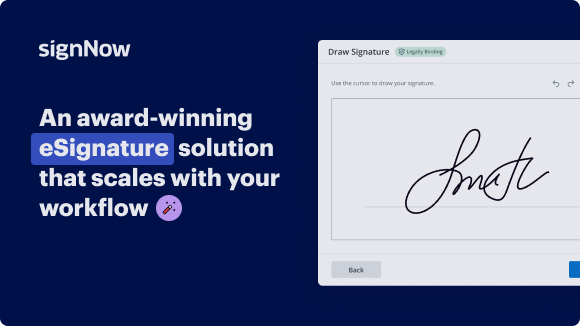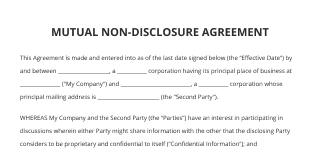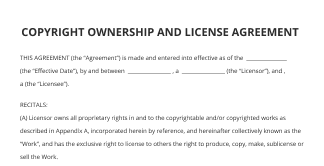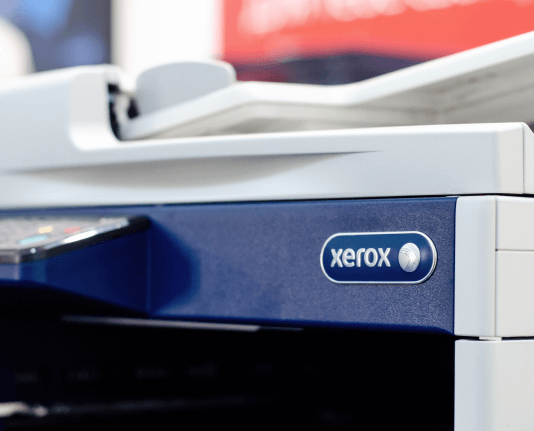Understanding Purchase Order Vs Invoice Vs Receipt for Streamlined Business Transactions
Move your business forward with the airSlate SignNow eSignature solution
Add your legally binding signature
Integrate via API
Send conditional documents
Share documents via an invite link
Save time with reusable templates
Improve team collaboration
See airSlate SignNow eSignatures in action
Understanding Purchase Orders
A purchase order (PO) is a formal document issued by a buyer to a seller, indicating the types, quantities, and agreed prices for products or services. It serves as a legally binding contract once accepted by the seller. In the digital workflow, creating a purchase order can be streamlined using airSlate SignNow, allowing users to prepare and send POs quickly and securely. Users can customize templates to fit their needs, ensuring all necessary details are included, such as payment terms and delivery instructions.
Defining Invoices
An invoice is a document sent by a seller to a buyer, requesting payment for goods or services provided. It typically includes details like the invoice number, date, itemized list of products or services, total amount due, and payment terms. With airSlate SignNow, users can easily create and manage invoices, ensuring they are professional and compliant with business standards. The ability to eSign invoices expedites the approval process, helping businesses maintain cash flow efficiently.
Clarifying Receipts
A receipt is a document acknowledging that payment has been received for goods or services. It serves as proof of transaction for both the buyer and seller. Receipts usually contain information such as the date of purchase, items bought, total amount paid, and payment method. Using airSlate SignNow, businesses can generate and send receipts electronically, making it easier to keep track of transactions and maintain accurate financial records.
Key Differences Between Purchase Orders, Invoices, and Receipts
While purchase orders, invoices, and receipts are all essential documents in the transaction process, they serve distinct purposes:
- Purchase Orders: Initiate the purchasing process and outline what the buyer intends to buy.
- Invoices: Request payment after goods or services have been delivered.
- Receipts: Confirm that payment has been made and serve as proof of the transaction.
Understanding these differences helps businesses manage their financial processes more effectively and ensures compliance with accounting practices.
Using Digital Tools for Efficiency
Incorporating digital tools like airSlate SignNow into your workflow can enhance the efficiency of managing purchase orders, invoices, and receipts. Users can prepare and send these documents for eSigning, edit them as needed, and store them securely. This not only saves time but also reduces the risk of errors and improves collaboration among team members. By digitizing these processes, businesses can focus more on growth and less on paperwork.
Best Practices for Document Management
To ensure effective management of purchase orders, invoices, and receipts, consider the following best practices:
- Maintain organized records of all documents for easy retrieval.
- Use standardized templates to ensure consistency across documents.
- Implement a digital signing solution to expedite approvals and reduce delays.
- Regularly review and update your processes to adapt to changing business needs.
By following these practices, businesses can streamline their operations and enhance their financial management capabilities.
airSlate SignNow solutions for better efficiency
Our user reviews speak for themselves






Why choose airSlate SignNow
-
Free 7-day trial. Choose the plan you need and try it risk-free.
-
Honest pricing for full-featured plans. airSlate SignNow offers subscription plans with no overages or hidden fees at renewal.
-
Enterprise-grade security. airSlate SignNow helps you comply with global security standards.

Comprehending purchase order vs invoice vs receipt
In the realm of business dealings, grasping the distinctions between a purchase order, an invoice, and a receipt is essential. Each document fulfills a distinct role in the buying and payment procedures. This guide will assist you in exploring the advantages of utilizing airSlate SignNow for effectively managing these documents.
Steps to implement airSlate SignNow for purchase order vs invoice vs receipt
- Open your internet browser and go to the airSlate SignNow homepage.
- Create a complimentary trial account or log in if you possess an existing one.
- Choose the document you intend to sign or send for signatures and upload it.
- If you aim to reuse this document later, save it as a template for subsequent purposes.
- Access your uploaded file and perform necessary modifications, such as adding fillable fields or including specific details.
- Sign the document and assign signature fields for the recipients.
- Click 'Continue' to set up and send an eSignature invitation.
airSlate SignNow provides a robust solution for businesses seeking to simplify their document signing procedure. With an extensive feature set that delivers excellent return on investment, it is designed to be user-friendly and adaptable, making it perfect for small to mid-sized firms. Furthermore, airSlate SignNow showcases transparent pricing with no concealed charges and offers exceptional 24/7 support for all paid plans.
In summary, utilizing airSlate SignNow can greatly improve your document management workflow. Begin your free trial today and discover the advantages first-hand!
How it works
airSlate SignNow features that users love
Get legally-binding signatures now!
FAQs
-
Do you need a PO before an invoice?
The main difference between purchase orders and invoices is their timing and purpose in a transaction. A PO comes first, ensuring the buyer formally approves a purchase before committing to payment. An invoice comes after, confirming what was delivered and requesting payment from the buyer. -
Does a PO go on an invoice?
The P.O. number is most often found in a specific location at the top of the sales invoice, below, or beside the invoice number. It should be labeled as the PO number to avoid confusion. This makes it easy to find a reference for a specific transaction later. -
Is a purchase order considered an invoice?
Here are the key differences between an invoice and a purchase order: Timing. A purchase order is issued before goods or services are delivered and outlines the terms of the purchase. An invoice is issued after delivery, requesting payment. -
Which comes first, purchase order or invoice?
Purchase order comes first and is created before the goods or services are provided while the invoice is usually sent after they have been rendered. -
Does an invoice come before an order?
It's important to note that a purchase order and an invoice are not interchangeable documents. A purchase order is issued before the goods or services are delivered, while an invoice is issued after the goods or services are delivered. -
Can you invoice without a purchase order?
The non-PO invoice procurement process Non-PO invoices often arise from smaller, regular expenditures, reimbursements for employee expenses, or legally contracted services. These purchases are usually made as and when the need arises, without going through the standard PO process. -
What is the relationship between PO and invoice?
Invoice. The difference between a purchase order and an invoice is that the buyer issues a purchase order, which is to be fulfilled by the vendor. In contrast, the vendor issues an invoice after fulfilling a purchase order, and the buyer must pay it.
What active users are saying — purchase order vs invoice vs receipt
Related searches to Understanding purchase order vs invoice vs receipt for streamlined business transactions
Find out other purchase order vs invoice vs receipt
- Unlock eSignature Legitimateness for Electrical ...
- Unlocking the Power of eSignature Legitimateness for ...
- Boost eSignature Legitimateness for Electrical Services ...
- ESignature Legitimateness for Electrical Services ...
- ESignature Legitimateness for Electrical Services ...
- Unlock the Power of eSignature Legitimateness for ...
- Unlock the Power of eSignature Legitimateness for ...
- ESignature Legitimateness for Non-Solicitation ...
- Unlocking eSignature Legitimateness for ...
- Unlock the full eSignature legitimateness for ...
- Boost eSignature Legitimacy for Non-Solicitation ...
- Boost eSignature legitimateness for Non-Solicitation ...
- ESignature Legitimateness for Non-Solicitation ...
- Unlock the Power of eSignature Legitimateness for ...
- ESignature Legitimateness for Travel Agency Agreement ...
- ESignature Legitimateness for Travel Agency Agreement ...
- ESignature Legitimateness for Travel Agency Agreement ...
- Boost Your Travel Agency Efficiency with eSignature ...
- Boost eSignature Legitimateness for Travel Agency ...
- Achieve eSignature legitimateness for Travel Agency ...






























